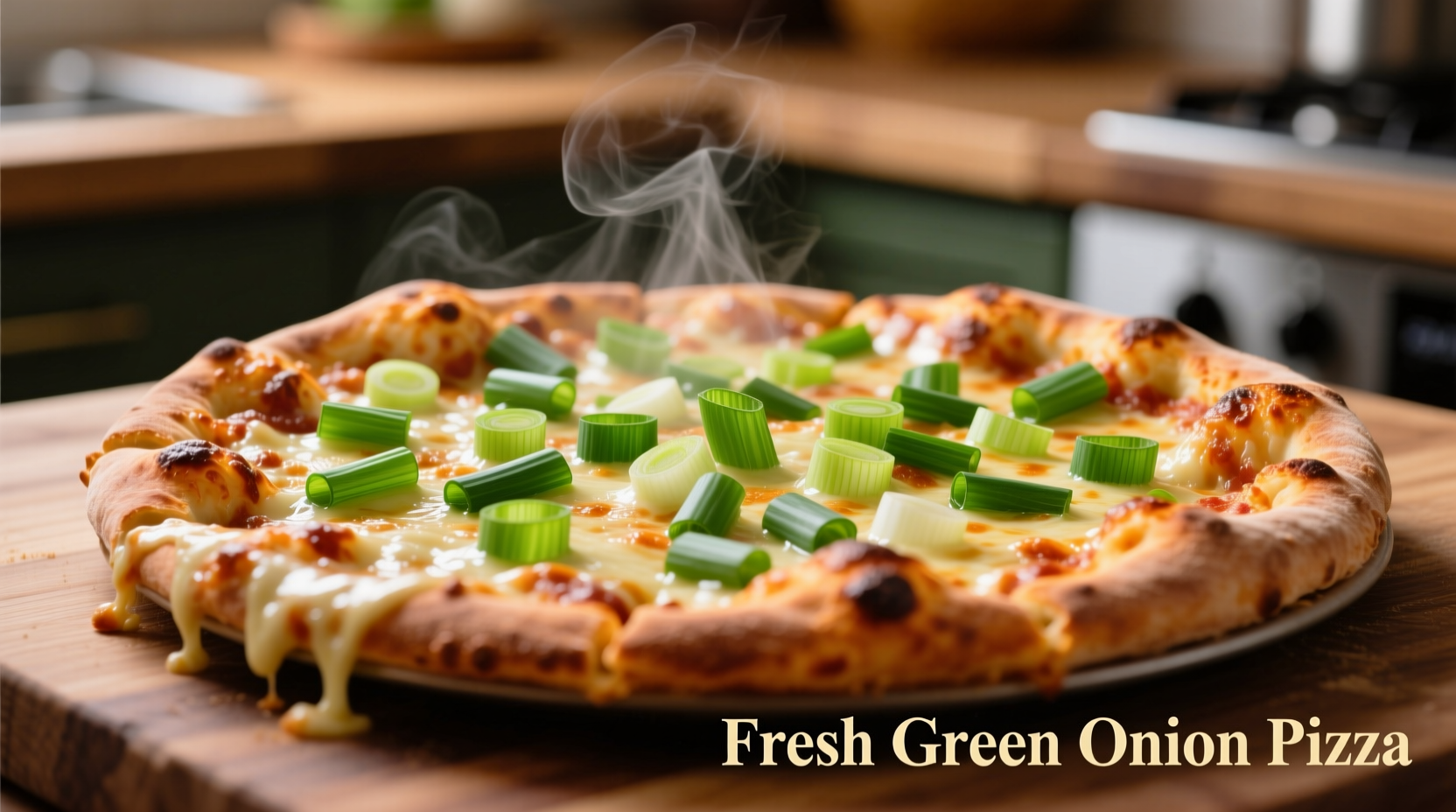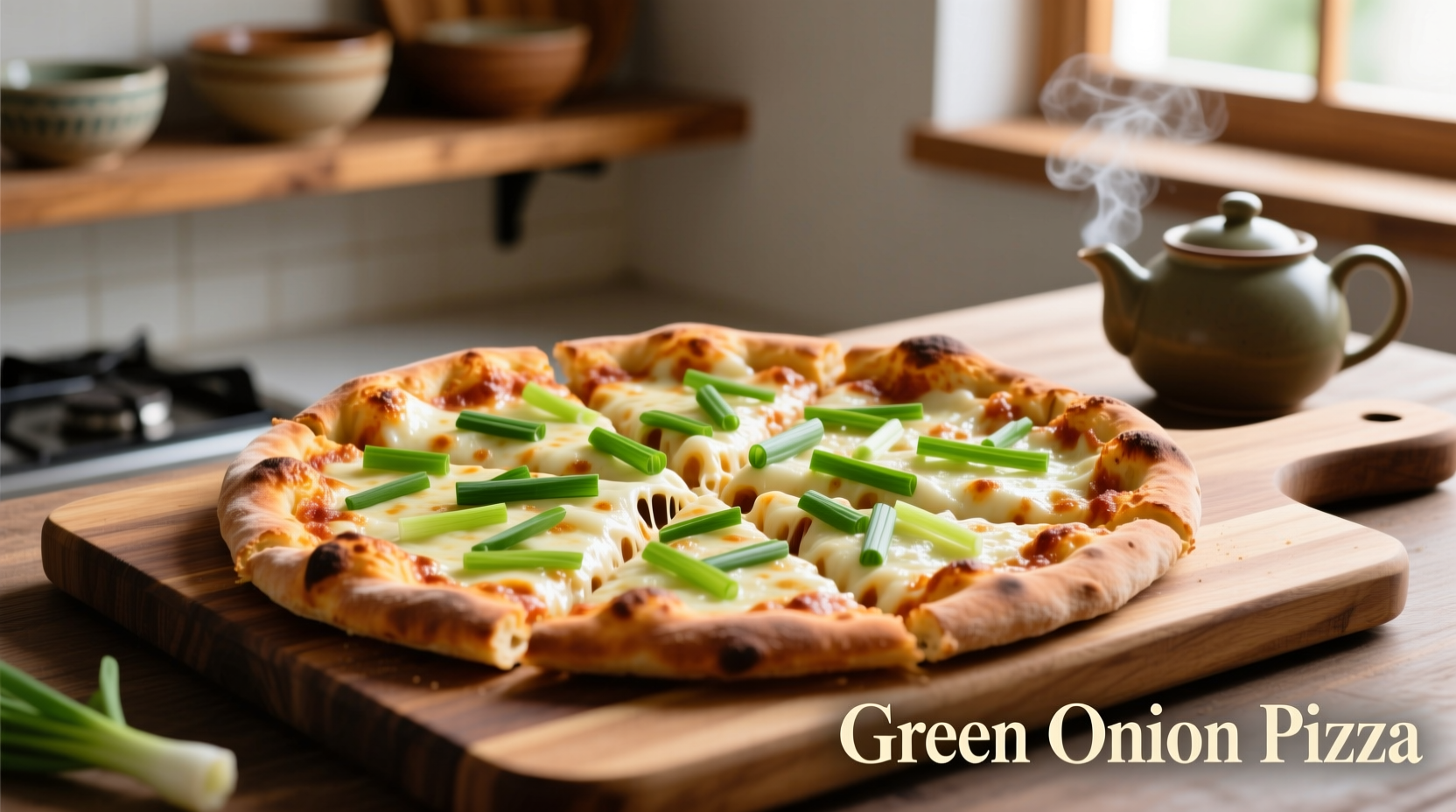The Culinary Journey of Green Onion Pizza
While pizza traditionally features Italian ingredients, green onion pizza represents a creative fusion that gained popularity through Asian-American culinary innovation. This dish beautifully demonstrates how regional ingredients can transform classic recipes without losing their essential character. Unlike standard vegetable toppings, green onions offer a unique flavor profile that changes dramatically based on preparation method and timing.
Why Green Onions Transform Ordinary Pizza
Green onions (also called scallions) contain sulfur compounds that create their distinctive flavor. When raw, they provide a sharp, pungent bite that can overwhelm other ingredients. However, proper cooking transforms these compounds through the Maillard reaction, developing complex sweet and savory notes that complement cheese and tomato bases perfectly.
| Preparation Method | Flavor Profile | Best Pizza Application |
|---|---|---|
| Raw, thinly sliced | Sharp, pungent, fresh | Finishing garnish after baking |
| Lightly sautéed | Mildly sweet, subtle onion flavor | Mixed with cheese before baking |
| Slow-caramelized | Deeply sweet, umami-rich | Base layer under sauce or as primary topping |
Essential Components for Perfect Green Onion Pizza
The magic happens when you select quality ingredients and understand their interactions. Professional chefs emphasize that the green-to-white ratio significantly impacts flavor balance. For optimal results, choose green onions with vibrant green tops and crisp white bases, indicating freshness that translates to better flavor development during cooking.
According to culinary research from the Culinary Institute of America's flavor chemistry department, the white portion contains more pungent compounds while the green portion offers grassier notes. This explains why many professional recipes call for separating the parts and adding them at different cooking stages.
Step-by-Step Preparation Guide
Follow this professional approach to achieve restaurant-quality green onion pizza at home:
- Dough preparation: Use a slightly thicker crust than standard pizza to support the moisture content of green onions
- Sauce application: Apply a light layer of sauce, leaving a small border for the crust
- Cheese foundation: Sprinkle 70% of your cheese base before adding toppings
- Green onion technique:
- Separate white and green portions
- Sauté white portions in olive oil until translucent (3-4 minutes)
- Add to pizza before final cheese layer
- Reserve green portions for post-baking garnish
- Baking: Cook at 475°F (245°C) for 12-14 minutes until golden
- Finishing: Immediately after baking, scatter fresh green onion slices and a drizzle of high-quality olive oil

Pro Tips for Maximum Flavor Development
Mastering green onion pizza requires understanding timing and temperature dynamics. Food science research shows that cooking green onions below 300°F develops sweetness gradually, while higher temperatures create more complex caramelization but risk bitterness if overcooked.
For home ovens that don't reach restaurant temperatures, consider these adjustments:
- Pre-cook white portions slightly to jumpstart caramelization
- Use a pizza stone preheated for at least 45 minutes
- Add half the green onions before baking, the rest after
- Finish with a sprinkle of flaky sea salt to enhance natural sweetness
Creative Variations Worth Trying
Green onion pizza serves as a versatile canvas for culinary creativity. Consider these professional variations that maintain the dish's integrity while offering new dimensions:
- Korean-inspired: Combine with gochujang-infused sauce and kimchi for a sweet-spicy umami experience
- Mediterranean twist: Pair with feta cheese, lemon zest, and oregano for bright, herbal notes
- Breakfast pizza: Add soft-scrambled eggs and a touch of soy sauce for savory depth
- White pizza version: Use ricotta base with garlic-infused olive oil instead of tomato sauce
Avoiding Common Green Onion Pizza Mistakes
Even experienced home cooks encounter pitfalls with this deceptively simple dish. Understanding these common errors can transform your results:
- Overloading with raw onions: Creates excessive moisture and overpowering sharpness
- Adding all onions before baking: Causes complete loss of fresh onion flavor and texture
- Insufficient caramelization: Leaves unpleasant raw onion taste without developing sweetness
- Using wilted or yellowing onions: Significantly reduces flavor complexity and visual appeal
Perfect Pairings for Green Onion Pizza
The balanced flavor profile of green onion pizza makes it exceptionally versatile for pairing. Consider these combinations that enhance rather than compete with its delicate flavors:
- Beverages: Crisp white wines like Sauvignon Blanc or light-bodied lagers
- Salads: Simple arugula salad with lemon vinaigrette
- Side dishes: Roasted mushrooms or grilled asparagus
- Desserts: Light citrus sorbet to cleanse the palate
Green Onion Pizza Through the Years
This dish evolved from humble beginnings to culinary staple:
- 1970s: First appeared in California fusion restaurants blending Asian and Italian cuisines
- 1990s: Gained popularity through Japanese-style pizza chains expanding globally
- 2000s: Entered mainstream American pizzerias as a "gourmet" topping option
- 2010s: Became a staple in artisanal pizza movements focusing on seasonal ingredients
- Present: Recognized as a classic variation with regional interpretations worldwide











 浙公网安备
33010002000092号
浙公网安备
33010002000092号 浙B2-20120091-4
浙B2-20120091-4